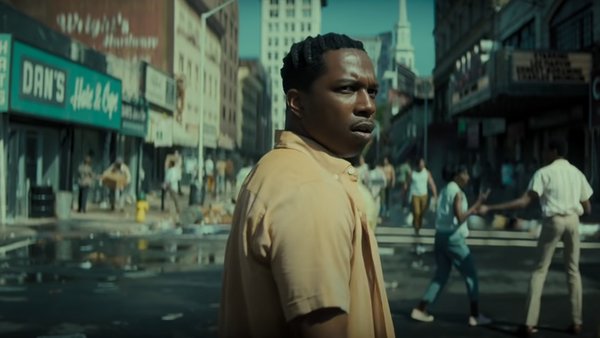The Many Saints Of Newark Review: 7 Ups & 3 Downs
5. Its Timely Themes & Social Commentary

With the bulk of its story taking place in the late 1960s, in the midst of America's counter-cultural upheaval, it presented a ripe opportunity for Chase to differentiate the film from its TV predecessor with its distinct portrait of the era.
And that Chase certainly does, the story unfolding against the backdrop of the 1967 Newark race riots, with many scenes focused on the racial tensions between Black citizens and both the police and local Italian-Americans.
Sights of Black men being beaten and even gunned down would always be horrifying, but are sure to be read very differently in 2021, and Chase clearly knows that without ever verging into tasteless or exploitative territory.
This context isn't merely a gloss, though: the character of Harold McBrayer (Leslie Odom Jr), a Black gangster keen to secure more for himself, is a pivotal figure for much of the film, increasingly insinuating himself in Dickie's personal and "professional" lives in dangerous ways.
More typically Chase also has a lot to say about the performative masculinity of the period, the low place of women in a "man's" world, and the world's evolving view of psychiatry, as is eyed with skepticism by some here but of course a major component of Tony's adult life in the series.
It all adds up to make the film feel densely packed with living ideas which inform everything we're seeing on-screen.